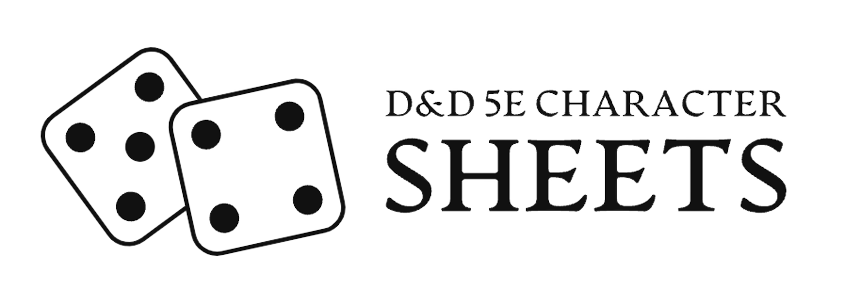In the world of Dungeons & Dragons, nearly every creature, from the mightiest dragon to your own player character, has an alignment. For the current fifth edition (5e) of D&D, this system uses nine distinct alignments. Think of alignment as a quick guide to a character’s fundamental moral and ethical attitudes, shaping how they view society, order, and the concepts of right and wrong. It’s all about how they interact with the world around them!
The Building Blocks: Two Axes of Alignment
At its heart, D&D alignment is built upon two key spectrums:
-
Law versus Chaos (The Order Axis): This axis describes a character’s attitude towards society, rules, and order.
- Lawful: Characters and creatures leaning towards Law value order, rules, tradition, and the group over the individual. They believe in systems, hierarchies, and codes of conduct to guide behavior and ensure a stable society. This means they tend to be reliable, honorable, and obedient to just authority.
- Neutral (on Law/Chaos): Those neutral on this axis don’t feel a strong pull towards rigid order or unbridled freedom. They might see the benefits of both or simply prioritize other things. They generally respect authority but can be persuaded to bend rules or act unpredictably based on the situation or personal needs.
- Chaotic: Characters and creatures leaning towards Chaos value individual freedom, adaptability, and personal expression above all else. They often find rules and bureaucracy restrictive and may act on impulse or follow their own desires. This can mean valuing flexibility and personal liberty, but it can also manifest as recklessness or a disregard for established norms.
-
Good versus Evil (The Moral Axis): This axis describes a character’s fundamental morality and their approach to others.
- Good: Characters and creatures of Good alignment are concerned with the well-being and dignity of others. They value life, act with altruism, and are often willing to make personal sacrifices to help or protect those in need. Compassion and respect for others are key.
- Neutral (on Good/Evil): Also known as having “neutral morality,” these characters are not strongly inclined to selfless sacrifice, nor are they driven by a desire to harm or exploit. Their commitments are often to personal relationships rather than abstract ideals of good or evil. They are hesitant to harm innocents but might not go out of their way to help others without personal motivation.
- Evil: Characters and creatures of Evil alignment are typically selfish, oppressive, and have little regard for the lives or well-being of others if it conflicts with their own desires. They might harm, kill, or exploit others for personal gain, out of a sense of duty to a malevolent power, or even just for cruel amusement.
The Nine Alignments: Combining the Axes
When you combine these two axes, you get the nine distinct alignments. The following grid shows how they fit together:
-
Lawful Good (LG) – “The Crusader” Creatures of this alignment believe that doing good is best achieved through order, discipline, and following just laws and societal expectations. They act with a strong sense of duty, honor, and compassion, and are often hesitant to break established codes or rules. Examples: Righteous paladins, most dwarves, noble knights.
-
Neutral Good (NG) – “The Benefactor” These individuals are driven by a desire to help others according to their needs, without a strong bias for or against established rules or traditions. They act with altruism and will work with lawful authorities or defy them if it means doing the greater good. Examples: Many celestials, some gnomes, kind-hearted healers.
-
Chaotic Good (CG) – “The Rebel” Chaotic Good characters strive to do what’s right and bring positive change, but they operate outside the system. They value freedom highly – both for themselves and others – and may find laws and bureaucracy to be hindrances. Their methods can be disorganized, but their intentions are pure. Examples: Many elves, unicorns, copper dragons, freedom fighters.
-
Lawful Neutral (LN) – “The Judge” These characters act strictly in accordance with their personal code, laws, or established traditions. They believe strongly in lawful concepts and the order set down by legitimate authorities, regardless of whether it serves good or evil. Examples: Many monks, soldiers who follow orders without question, some wizards.
-
Neutral (N) or True Neutral – “The Undecided” True Neutral characters avoid strong commitments to any particular alignment. They might actively seek balance in the world, act primarily out of self-interest without leaning towards good or evil, or, in the case of many animals, operate on instinct rather than conscious moral decision-making. Examples: Druids seeking balance, many humans, lizardfolk, most animals.
-
Chaotic Neutral (CN) – “The Free Spirit” Creatures of this alignment follow their whims and value their personal freedom above all else. They don’t intentionally set out to cause trouble or do good; they simply do what feels right or beneficial to them at the moment, without much regard for rules or the impact on others. Examples: Many rogues, barbarians, some bards, mercenaries.
-
Lawful Evil (LE) – “The Dominator” These creatures use order, rules, and societal structures as tools to achieve their selfish or malevolent goals. They believe that a well-ordered system is easier to exploit or control. They are methodical and often keep their word, but their ultimate aims are corrupt. Examples: Devils, blue dragons, hobgoblins, tyrants.
-
Neutral Evil (NE) – “The Malefactor” Neutral Evil characters are fundamentally selfish and will do whatever they can get away with to achieve their aims, without hesitation to harm others. They don’t feel bound by laws or traditions, nor are they driven by a love of chaos – only by their own avarice and ambition. They might turn on allies in a heartbeat if it benefits them. Examples: Some dark elves (drow), yugoloths, many goblins, assassins for hire.
-
Chaotic Evil (CE) – “The Destroyer” These creatures are driven by pure selfishness, greed, and often a lust for destruction or cruelty. They have no respect for rules, order, or the lives and freedom of others, caring only for their personal desires. They resent authority and rarely work well in groups, as their actions are unpredictable and self-serving. Examples: Demons, orcs, red dragons, serial killers.
Alignment as a Roleplaying Tool
It’s worth remembering that alignment is a guideline, a starting point for understanding a character’s nature. For thinking creatures, it’s often a moral choice, though some beings have strong inborn tendencies reflecting the nature of their gods or their very essence. While the D&D alignment system helps categorize moral and ethical stances, characters can still be complex, and their actions ultimately define them more than their stated alignment.

